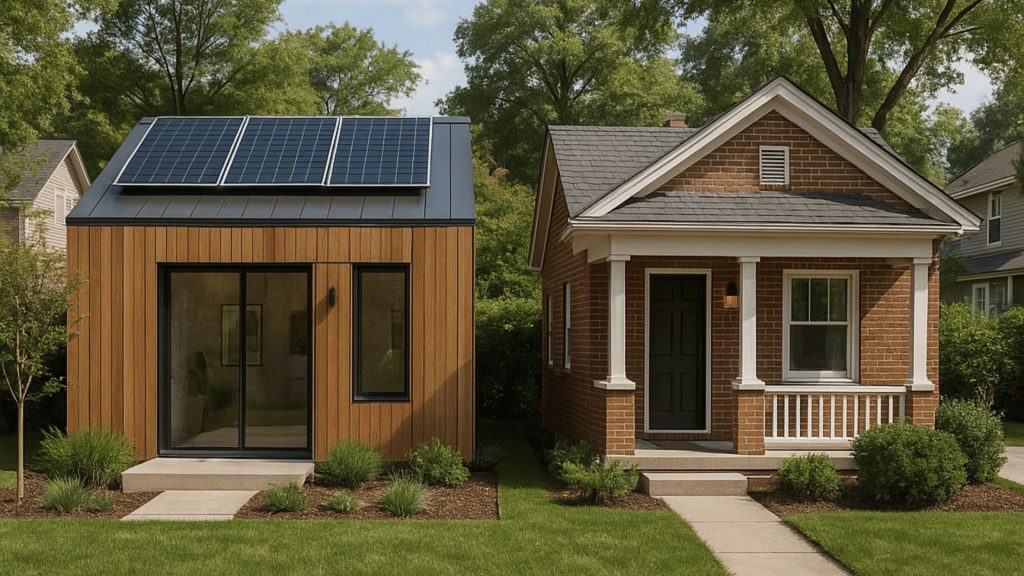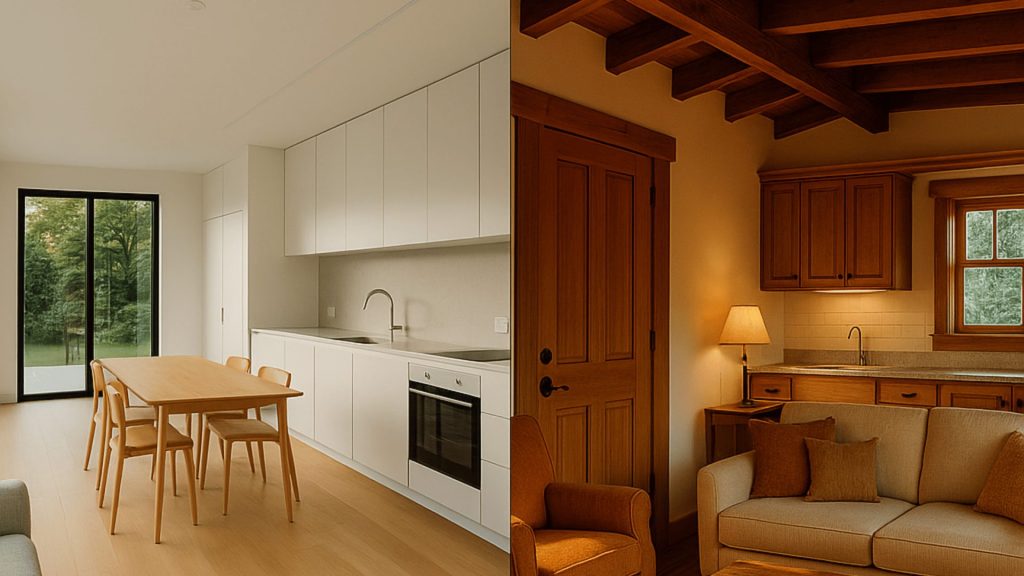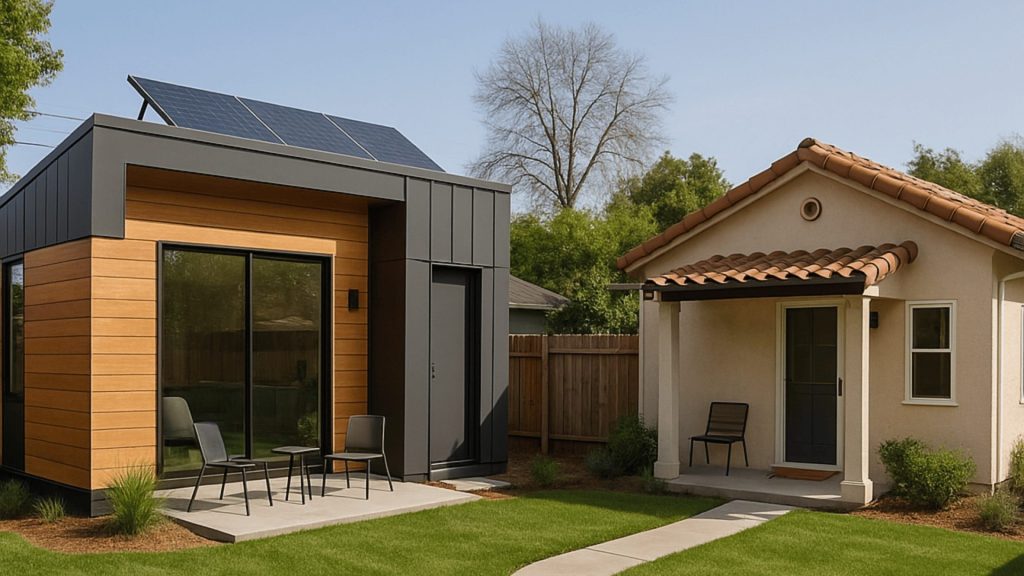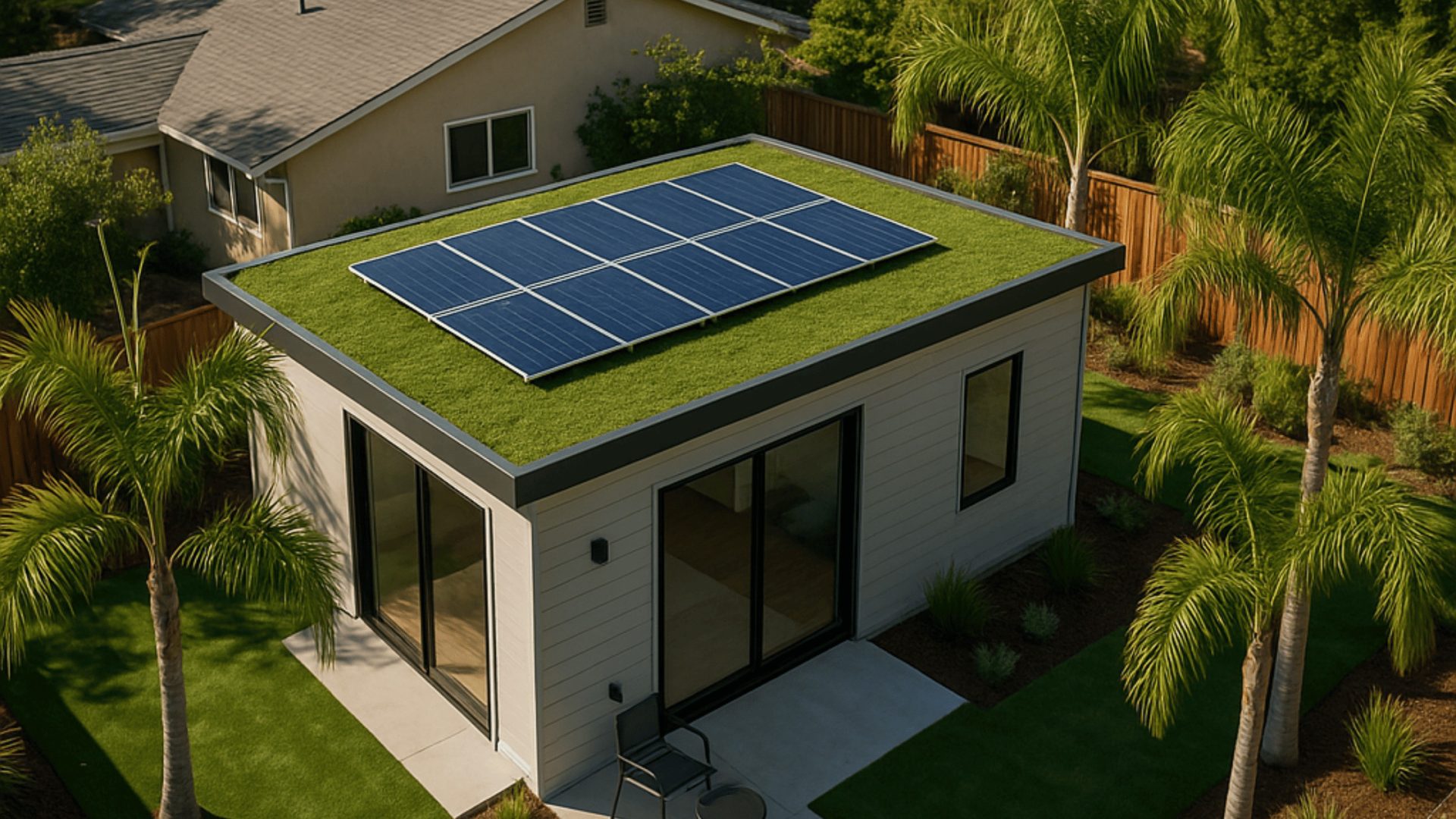Prefab House vs Traditional ADU Builds: California homeowners are discovering the value of Accessory Dwelling Units (ADUs) as a smart way to add space, create rental income, or provide a comfortable place for family members. Whether it’s a backyard cottage or a modern in-law suite, ADUs have quickly become a popular solution in cities where space is limited and housing costs are high.
When planning an ADU, one of the first decisions you’ll face is choosing between a prefabricated (prefab) unit and a traditional site-built structure. Each option has its own advantages, challenges, and cost considerations. The right choice depends on your priorities whether that’s speed, budget, or long-term customization.
In this article, we’ll take a closer look at how prefab ADUs compare to traditional ADU builds so you can decide which path makes the most sense for your property.
What is a Prefab House?
A prefab ADU is built in a factory setting, then transported and installed on your property. Since much of the construction happens off-site, the timeline is shorter, and the process causes less disruption at home.
There are several types of prefab ADUs, including:
- Modular units: Large sections built in a factory and assembled on your lot.
- Panelized homes: Wall panels and building components shipped and put together on-site.
- Pre-cut kits: Materials cut precisely at the factory and delivered for final assembly.
Prefab ADUs are known for their predictable pricing and efficient process, though customization options may be limited compared to traditional builds.
What is a Traditional ADU Build?
Traditional ADUs, often called stick-built units, are constructed entirely on-site just like a small home. This means starting from the foundation and progressing through framing, roofing, and finishing.
The biggest advantage of a traditional ADU is complete design freedom. You can customize the layout, choose finishes that match your main home, and create a seamless look that blends into your neighborhood.
This method, however, usually takes longer and often comes with a higher price tag due to labor, materials, and permitting requirements.

Key Differences Between Prefab and Traditional ADUs
Construction Timeline
- Prefab ADU: Completed faster since factory work and site preparation happen simultaneously. Timelines often range from weeks to a few months.
- Traditional ADU: Longer build times, often several months, with possible delays from weather or inspections.
Costs and Budgeting
- Prefab ADU: Pricing is more predictable, with controlled factory costs. However, transportation and installation can add to expenses.
- Traditional ADU: More flexible in design, but costs are less predictable due to potential site issues or material price changes.
Design Flexibility
- Prefab ADU: Limited to pre-set designs, though modern options are stylish and functional.
- Traditional ADU: Fully customizable, allowing you to design the space exactly as you want it.
Quality and Durability
- Prefab ADU: Built in controlled environments, reducing errors and exposure to weather.
- Traditional ADU: Quality varies with the contractor’s skill and site conditions, but a well-built traditional ADU can be extremely durable.
Environmental Impact
- Prefab ADU: Produces less waste thanks to precision factory cuts. Many include energy-efficient features.
- Traditional ADU: Typically generates more waste but allows for eco-friendly material choices tailored to your project.
Pros and Cons of Prefab ADUs
Pros
- Faster completion times.
- Predictable and often lower costs.
- Factory-built consistency and quality.
- Less disruption to your property.
- Reduced material waste.
Cons
- Limited customization in layout and design.
- Added costs for transportation and installation.
- Possible restrictions from local zoning or HOA rules.

Pros and Cons of Traditional ADUs
Pros
- Full design control over layout, finishes, and materials.
- Seamless match with the existing home.
- High resale value due to custom integration.
- Long-term durability when built by skilled contractors.
Cons
- Longer timelines with potential for delays.
- Higher labor and permitting costs.
- Greater chance of budget overruns.
Which Option is Right for You?
Choosing between prefab and traditional ADUs comes down to your personal priorities:
- Choose prefab if: You want a quicker project with less disruption and more predictable pricing.
- Choose traditional if: You value full customization and want an ADU that blends perfectly with your home.
Example Scenarios:
- A homeowner adding a backyard rental quickly might choose prefab.
- A family building a long-term guest house for relatives may prefer traditional construction.
- An investor focused on long-term property appreciation could evaluate both based on local market demands and budget flexibility.
How Nestadu Helps California Homeowners
At Nestadu, we specialize in guiding homeowners through every stage of the ADU journey. Whether you’re leaning toward a prefab solution or considering a traditional build, our experienced contractors and designers are here to make the process simple and stress-free.
Here’s how we support your project:
- Personalized consultation: We walk you through both prefab and traditional ADU options to find what fits your property best.
- Transparent pricing: Every cost is outlined clearly, so there are no surprises.
- Expert design: From functional layouts to stylish finishes, we make sure your ADU complements your home.
- Complete project management: From permitting to final walkthrough, our team handles the details so you can enjoy your new space.
With our focus on craftsmanship and client satisfaction, you can trust Nestadu to build an ADU that adds value to your home and improves your lifestyle.

Conclusion
Both prefab and traditional ADUs provide excellent ways to expand living space and add long-term value to your property. Prefab homes stand out for their speed, predictability, and efficient process, while traditional builds offer unmatched flexibility and a tailored fit to your home.
The right choice depends on your goals, budget, and how quickly you want to complete your project. By working with an experienced ADU builder like Nestadu, you’ll have the guidance and expertise needed to make the best decision for your property.
If you’re ready to explore ADU options, contact Nestadu today and let us help you create a functional, beautiful, and lasting addition to your home.




